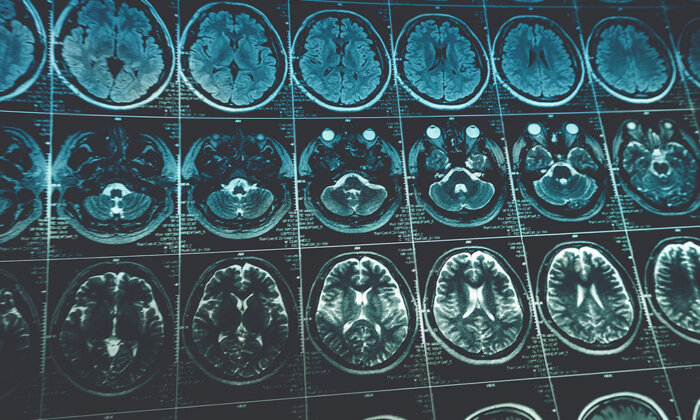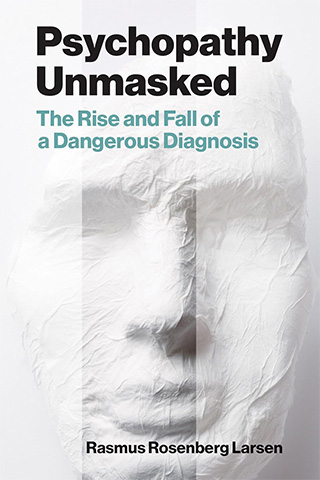The Neuroscience of Psychopathy Has a Spin Problem

In 2009, MRI research on psychopathy was presented for the first time in a U.S. courtroom in the homicide case State v. Brian Dugan. Since then, neuroimaging research on psychopathy appears to have made its way into the court system with increasing frequency.
How exactly neuroimaging evidence impacts decisions about psychopathic persons in the broader criminal justice system — and how it impacts practitioners’ general understanding of psychopathy — is difficult to say for sure. But MRI experiments have historically been presented by scientists as a validating form of information, lending legitimacy to the use of psychopathy assessments as evidence-based practice. And once a disorder is described as having been validated by “hard” technology-driven science like neuroimaging, it may bolster the claims that are ordinarily associated with the condition.

However, in my book “Psychopathy Unmasked,” I review three decades of MRI research investigating whether psychopathy has a neurological basis. The conclusion that I reach is markedly different from the one that is typically encountered in the mainstream psychopathy literature. While the idea of psychopathy as a “brain disorder” has a long history and has been studied using various technologies, it wasn’t until the year 2000 that scientists began to rigorously test it using structural and functional MRI methods. Since then, dozens of MRI studies have been published, yet the most reasonable conclusion to draw from this research is that no reliable evidence has emerged to corroborate the idea that psychopathy — as measured by the Psychopathy Checklist (PCL) — is correlated with brain abnormalities of any kind. Overall, the experimental results are predominantly nulls with few inconsistent statistically significant effects (often in opposing directions), which might be better explained as a byproduct of confounding variables unrelated to psychopathy, such as substance misuse, medication, or head trauma.
The most reasonable conclusion to draw from this research is that no reliable evidence has emerged to corroborate the idea that psychopathy is correlated with brain abnormalities of any kind.
This conclusion raises an important question: If there has never been any clear evidence of brain abnormalities in PCL psychopathic persons, why do so many scientists keep portraying psychopathy as a neurodevelopmental disorder? If you read recent review studies from scientific journals, what you will soon discover is that authors appear to draw conclusions that diverge from mine, repeatedly, yet wrongly, claiming that psychopathy is linked to brain abnormalities.
For example, in a study I conducted with Jarkko Jalava, Stephanie Griffiths, and Emma Alcott, we found that between the years 2000 and 2022, at least 45 review studies were published, the vast majority of which describe the MRI neuroimaging evidence as supportive of the brain-disorder view of psychopathy. Even as some reviewers began to voice hesitancy about the inferential value of the MRI research during the 2010s — including Michael Koenigs and colleagues in 2011 and later Stephanie Griffiths and Jarkko Jalava in 2017 — review authors appear to have kept repeating statements that express little doubt about linking psychopathy to brain abnormalities. At least 30 review studies have been published since 2010, but only a few of these state that the evidence is (at best) inconclusive.
What strikes me as particularly curious is that this pattern deviates from what I found in my book when examining other areas of research, such as dangerousness, treatment, and moral capacities. In those domains, the review literature has historically been accurate, often pushing back against the mainstream portrayal of psychopathic individuals as untreatable, morally deficient, and inherently dangerous. In those cases, the problem tends to lie with a small number of researchers and practitioners promoting exaggerated views that contradict the broader scientific consensus.
For instance, in 2002, Paul Gendreau and colleagues pointed out that there was no empirical evidence to suggest that PCL psychopathic persons were associated with extraordinary risk levels. And in the same year, 2002, Randall Salekin demonstrated that there was little evidence to support the claim that psychopathic persons were untreatable. Large-scale reviews of the empathy and moral reasoning literature came a bit later (because the research did not develop before the mid-2000s), with the first quality review study published in 2013 by Jana Borg and Walter Sinnott-Armstrong, which concluded that there was no basis for describing psychopathic persons as severely morally incapacitated.
In short, the science has always been accurately summarized in the review literature, where the misleading depictions of psychopathy have originated elsewhere. But with the brain-disorder question, the review literature appears to have gotten it systematically wrong. This is particularly problematic because it is usually this type of literature that forensic practitioners and legal decision-makers rely on when they seek information about psychopathy. So, these professional groups might be wondering why the empirical evidence is systematically misrepresented in the review literature.
In trying to find answers to this question, it seems to me that we cannot rule out the possibility that these tendencies are driven (at least in part) by the phenomenon of scientific spin, the practice where scientists make their experimental work look “better” than it actually is. One reason we cannot rule out scientific spin is that it has already been documented to have had a broad impact on the behavioral and social sciences; therefore, it would be odd if it had not also impacted psychopathy research.
For example, a 2012 study by Leslie John and colleagues surveyed 2,155 anonymous psychology researchers and found that more than half of the respondents admitted to having used several spin tactics (e.g., selectively excluding experimental data that contradicts the researchers’ theory). There might be many reasons why scientists resort to spin tactics, but a central motivation appears to be simple “careerism,” where scientists are disproportionately rewarded if they find/report statistically significant and exciting results as opposed to using their work to promote cautious messages and (boring) null findings. Thus, maybe the neuroscience of psychopathy has a problem with scientific spin?
To probe this theory, Jarkko Jalava, Stephanie Griffiths, Emma Alcott, and I designed a study where we wanted to test if authors of review studies were selectively reporting results that made the neuroscientific research, as a whole, look more robust than it actually is. In other words, we wanted to test whether the problem lay solely in interpreting the neuroscientific evidence, or whether it was also a matter of selectively presenting the evidence in a way that made it appear better than it actually was. To do this, we first identified all sMRI research on PCL psychopathy published since 2000, which amounted to 38 studies. We then catalogued all the effects from each study to calculate the proportion of null findings across these studies. Out of a total of 791 effects, we found that 64.10 percent were nulls. Thereafter, we took all the review studies published in the same period and calculated the proportion of null findings reported in these publications. If the review literature did a decent job at communicating the basic insights from the field, review studies should then report numbers that mirror the true proportion of nulls. However, what we found was that the nulls had virtually disappeared from the review literature, as if the review literature acted as a sift, like a miner panning for gold in a river.
Across a total of 45 review studies, authors were on average only reporting 8.99 percent null effects. The picture was even more skewed in focused reviews, such as those investigating the effects from the amygdala region, where the average null reporting dropped to 2.59 percent (compared to a 2022 study, which found the true proportion of sMRI nulls to be 70.37 percent). In reviews tailored to making recommendations to forensic practitioners and legal decision-makers, the null proportion was 5.39 percent.
An equally interesting finding was that 19 review studies (42 percent) did not report a single null finding, which should have been a major red flag for experts in charge of the peer-review process (it is well known that neuroimaging studies almost always find some null effects). This latter observation suggests more systemic problems with spin, where peer reviewers appear to tolerate the practice.
Of course, it is inherently difficult to determine whether the systematic omission of null effects from the review literature is an act of scientific spin or simply an honest mistake of overlooking null effects, or a mixture of both. And perhaps it does not matter what the reason is because, whether the problem boils down to an issue with scientific spin or honest mistakes, the reality is the same: For the past two decades forensic practitioners and legal decision-makers would have been misled if they had followed due diligence and relied on the review literature when seeking information about neuroimaging research about psychopathy. The good news is that in the past years, we have seen the publication of high-quality review studies, where authors are now paying more attention to the extent of nulls.
However, even as the review literature is slowly correcting, readers should be aware that spin about the brain-disorder view of psychopathy is not a problem limited to the scientific peer-reviewed literature. It is arguably more rampant in public media, including op-eds and journalistic interviews, as well as in popular books about psychopathy, sometimes written by leading scientists. A search on YouTube and TikTok will readily yield hundreds of videos (amassing millions of views) where experts are explaining how psychopathy is caused by a brain abnormality, and it is not uncommon for TV documentaries about psychopathy to include a segment with MRI research.
A prototypical example of a documentary that I often show to my students (as an example of scientific spin) is a 2014 production by the Canadian Broadcasting Corporation — the national television station in Canada — titled “The Psychopath Next Door,” which features various leading scientists in the field. In this documentary, one expert is on record saying that psychopathic persons have “degraded connections in the brain,” which causes their brains to be “hypersensitive to reward” and “undersensitive to the suffering of others.” What is interesting about this comment is that a couple of years before this documentary was released, the same expert coauthored a review article that concluded that neuroimaging research is “remarkably heterogenous.”
It was as if the review literature acted as a sift, like a miner panning for gold in a river.
Perhaps the strongest evidence of spin comes from the book publishing industry, where some researchers have signed popular science contracts on psychopathy and are encouraged to write more compellingly to boost sales. This creates a tension, as the push for excitement can easily slip into scientific spin, a line that is often thin and difficult to navigate. I do not mean to say that there is something problematic about simplifying science for the sake of making it more entertaining, but the problem with this popular genre is that the way psychopathy is described in these books often migrates into the scientific disciplines and legal practices as students and professionals may use these sources as a steppingstone in their quest to better understand the subject matter. There are many examples of what appears to be spin from this domain, but it is interesting to observe that the most cited and probably most widely distributed titles all build on the narrative about psychopathic persons having brain abnormalities.
For instance, the most popular book about psychopathy, Robert Hare’s “Without Conscience” (from 1993), begins with an alluring anecdote about how EEG neuroimaging technology has documented extreme brain abnormalities in psychopathic persons, so much so that Hare claims to have had one of his scientific papers rejected because the EEG data from psychopathic persons were so abnormal that the journal editor would not believe that it was retrieved from human beings. Similarly, the book “The Psychopath Inside” by James Fallon (from 2013) conveys an admittedly absorbing story about how Fallon himself, a neuroscientist, accidentally discovered that he was a psychopath by studying his own MRIs. Lastly, in “The Psychopath Whisperer” by Kent Kiehl (from 2014), the narrative centers around neuroimaging research on psychopathic persons, of which the author, a leading expert, writes that the “consistency of their [psychopathic persons’] brain abnormalities never ceased to amaze me.”
The ideas conveyed in these popular books are, of course, scientifically untenable, and they arguably border on sheer make-believe. While they are undoubtedly entertaining, they come across as a form of spin that ends up doing a disservice to forensic practitioners and legal decision-makers as they perpetuate scientifically misleading views.
Rasmus Rosenberg Larsen is Assistant Professor of Forensic Epistemology and Philosophy of Science at the University of Toronto Mississauga and Senior Scientist at the National Center for Ontological Research. His research has appeared in journals like The Lancet: Psychiatry; Psychology, Public Policy, and Law; and Philosophical Psychology. He is the author of “Psychopathy Unmasked,” from which this article is excerpted.



